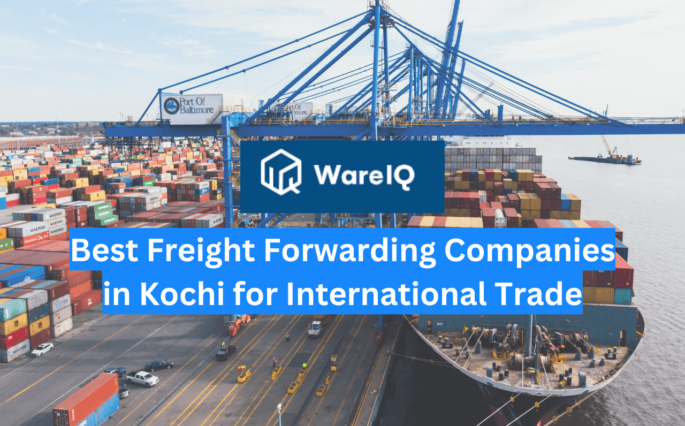Food and Beverage Fulfilment: 7 key takeaways for D2C Brands


Food and Beverage Fulfilment, As a direct-to-consumer (D2C) e-commerce business, accurate, smooth D2C fulfilment is essential for your business. The direct-to-consumer (D2C) business model is basically about delivering your online goods directly to your customers. In a virtual world dominated by Amazon, Zalando, and ASOS, innovative new entrepreneurs offer great products, one-click purchases, and rapid delivery. Bye-bye physical store space and endless queues. The recognition that government-to-consumer e-commerce offers can be very exciting, as well as the unprecedented market access and global customer base. Plus, you can sell your products at lower prices than conventional consumer brands, undercutting them, and maintain full control over the production, promotion, and distribution of your products.
What is Fulfilment?
Logistics is a very broad field. As a business founder who has a great idea but no business experience, it can be difficult to understand what it means or involves. Logistics, as a general term, refers to the organization, processes, and services required to make sure that goods and orders flow efficiently from storage to shipment and delivery. This also includes data flow, which is very important for smooth order fulfilment.
There are four key types of logistics:
1. Warehousing
It is Important to have a perfectly sound warehouse, In the case of perishable goods like food items, which has a minimal shelf life to make sure that delivery of healthy vegetables and fresh fruits is on time. Warehousing includes: The planning, administration, and transportation of inventory, including the shipping and receipt of physical goods, are all various and complicated processes that go into warehousing. In addition to the actual inventory, warehouse logistics may also include duties like managing damaged items, safety and security procedures, human resource management, insurance, and customer returns. In short, everything is required to keep warehouse operations operating efficiently. Excellent planning and warehouse management tools are needed for this.
2. Shipping Logistics
The procedure used to transport a product from point A to point B. Simply said, it is the logistics of physically carrying a commercial product. It entails resource planning, organisation, administration of various transport vehicles throughout the carrier’s offices, execution, and control of sent products transportation.
3. CEPs (Courier, Express, Parcel)
CEP logistics services are quick shipping logistics services for delivering non-palletized commodities weighing less than 50kg over a short distance. It essentially includes all rapid, dependable delivery of smaller things, mainly across shorter distances on the ground – but some CEP shipments travel by air. Courier (the person or firm who delivers the items, generally over a short distance), Express (time-bound delivery, when shipments are delivered within a day or two), and Parcel (what it says on the box – the parcel itself) are all part of the acronym.
4. Inbound vs. Outbound Logistics
Inbound logistics involves the transportation, storage, and delivery of all things entering (receiving) a firm. Outbound logistics is the opposite: all of the things leaving (being transported out of) a company.
Value creation by D2C brands in Food and beverage Industry
| Larger spend category | Commands large wallet share with developed countries spending more than 7.7% of GDP per capita on Food & Beverage fulfilment. |
| High organized retail | High penetration of organized retail in developed countries such as the USA (85%) and China (45%) allows access to a more affluent consumer base. |
| Newer dietary preferences | The high preference of consumers towards organic, plant-based alternate products creates a large opportunity for brands in this space |
| Growth in the millennial population | The target consumer for D2C companies is the millennial population which is growing steadily as 40% of the global population is below 24 years of age |
| The emergence of a nuanced market focused on health | Changing dietary preferences towards organic and vegan meals driving the emergence of health & nutrition focused brands across categories including health supplements, protein bars, breakfast cereals and snacks |
| Focus on quality | Rising consumer awareness regarding low nutrition content and quality of unbranded products Increased consumption of branded food products due to the associated quality assurance that comes with them |
Credits: Avendus
The Contribution of 3PL Companies to Food and Beverage Fulfilment
1. Growing 3PL Logistics
According to research, 3PL logistics businesses have gone a long way in India. With more people purchasing online, 3PL shipments have skyrocketed in the last three years. Cost increases in logistics can be related to a variety of factors.
2. Factors Affecting 3PL Costs
First, it is dependent on an increase in order volume, particularly increased e-commerce sales and operational scale. Second, higher salaries due to labour scarcity, expensive storage and transportation expenses, and ineffective management can contribute to increased spending and a delay in corporate growth.
3. Enhancing Supply Chain Efficiency with 3PL
D2C brands may alter their operations and increase their sales margins by reducing these expenses and improving supply chain efficiency. Having a dependable third-party logistics partner may help businesses manage their logistics more successfully.
4. Cost-Effective Automation
Outsourcing to a 3PL provider may be a realistic choice for individuals who believe automation is too pricey. These organisations frequently provide shopping carts, shipping partners, and customer service teams, giving businesses total control over their operations via a computer screen for food and beverage fulfilment.
5. 3PL Advancements
This allows businesses to concentrate on creating their core goods and growing their brand for future development. 3PL logistics businesses, according to industry analysts, have made significant improvements, including expanding their reach to additional pin codes and improving their capacity to manage returns.
6. Tech-Driven Logistics
To enhance logistics operations, many technological interventions have been implemented. To accomplish same-day deliveries, it is critical to be closer to clients in terms of delivery or despatch. This strategy may result in speedier delivery times and more accurate stock flow forecasting.
7. Last-Mile Delivery Partnerships
Instead of developing new despatch networks, corporations are looking for methods to link with current last-mile delivery alternatives. This method can aid in the food and beverage fulfilment of late orders while keeping prices low.
8. Temperature Controlled Warehouses
In food and beverage fulfilment, temperature-controlled warehouses play a crucial role in maintaining the quality and safety of products. These warehouses are equipped to regulate temperature and humidity levels, ensuring that perishable items, like fresh produce and dairy products, stay fresh and free from spoilage during storage and transportation.
Best Practices for Last-Mile Food and Beverage Fulfilment.
- India’s food and beverage fulfilment business is not only enormous, but it also caters to a diverse spectrum of consumers.
- According to a survey, India’s food and beverage fulfilment business is the fastest-growing market, with a projected value of $156.25 billion by 2026. D2C firms are having an impact on the food and beverage fulfilment market, from kid-friendly snacks to ready-to-cook meals.
- Whether ordering online or in-store, the availability of these commodities to end customers is dependent on a well-functioning supply chain ecosystem.
- Any interruption in this ecosystem might result in customers seeing warnings such as “product unavailable” or “out of stock.”
- Delivery optimisation is critical for the success of any D2C food and beverage fulfilment business.
- On-time delivery is critical in all categories, whether perishable or packaged items, to keep customers interested in the brand.
- Furthermore, apparent compliance with food safety and transportation rules on packaging and invoices will boost customer confidence.
- These companies should concentrate on offering various delivery alternatives for their items.
- To meet the varying demands of clients, website/app connections with multiple logistics service providers such as same-day delivery, expedited delivery, and scheduled delivery. This can aid in increasing client happiness and loyalty.
Conclusion
As a direct-to-consumer (D2C) e-commerce business, accurate, smooth fulfilment is essential for your business. To enhance logistics operations, many technological interventions have been implemented. To accomplish same-day deliveries, it is critical to be closer to clients in terms of delivery or despatch. This method can aid in the food and beverage fulfilment of late orders while keeping prices low. According to a survey, India’s food and beverage fulfilment business is the fastest-growing market, with a projected value of $156.25 billion by 2026. D2C firms are having an impact on the food and beverage fulfilment market, from kid-friendly snacks to ready-to-cook meals. Delivery optimisation is critical for the success of any D2C food and beverage fulfilment business.







